Key Takeaways
- Cultural Alignment Matters: Tailor your employer brand to align with Filipino values like bayanihan and malasakit, fostering a connection with the diverse workforce.
- Tech Integration for Success: Embrace technology in recruitment and employee experiences, staying ahead in a competitive market evolving towards digitalization.
- Future-Ready Strategies: Anticipate trends like personalized experiences, emphasis on well-being, and a commitment to diversity for a resilient and future-ready employer brand in the Philippines
In the dynamic landscape of the Philippines’ burgeoning job market, where skilled professionals are in high demand, the concept of “Employer Branding” has emerged as a pivotal force shaping the recruitment and retention strategies of forward-thinking companies.
As organizations seek to attract, engage, and retain top-tier talent, the importance of establishing a compelling and distinctive employer brand cannot be overstated.
Welcome to our comprehensive guide on “Employer Branding in the Philippines,” where we delve deep into the intricacies of this transformative practice, tailored specifically for the unique nuances of the Philippine professional landscape.

The Philippine Employment Terrain: A Mosaic of Opportunities and Challenges
The archipelagic beauty of the Philippines is mirrored in its diverse and vibrant job market, characterized by a mosaic of industries, each contributing to the nation’s economic tapestry.
Against this backdrop, employers find themselves navigating a competitive arena where the battle for exceptional talent is fierce.
In such an environment, the essence of employer branding transcends mere recruitment—it becomes a strategic imperative for organizations aspiring to not only survive but thrive in the ever-evolving corporate ecosystem.
Defining Employer Branding: Beyond the Surface
To embark on this enlightening journey, let’s first unravel the layers of employer branding.
It’s more than just a buzzword; it’s a multifaceted strategy that goes to the core of what makes a company unique and appealing to potential and existing employees.
Beyond a logo and a catchy tagline, employer branding encapsulates the soul of an organization—its values, culture, and the promises it makes to its workforce.
Why Employer Branding Matters in the Philippine Context
As we peer into the current job market dynamics in the Philippines, the need for a robust employer brand becomes glaringly apparent.
With a young and tech-savvy workforce hungry for meaningful careers, companies that can articulate their distinct identity and showcase a positive employer brand gain a decisive edge.
This guide aims to demystify the significance of employer branding in the Philippines, shedding light on how it acts as a magnet for talent in a sea of career opportunities.
Peeling Back the Layers: Key Elements of Successful Employer Branding
In the pursuit of attracting the best and brightest, companies must understand the essential elements that constitute a compelling employer brand.
From fostering an inclusive company culture to amplifying employee success stories, and from offering competitive compensation packages to providing avenues for professional growth—each facet contributes to the intricate tapestry of employer branding success.
Embarking on the Journey: Crafting Your Unique Employer Branding Strategy
Building a formidable employer brand demands a strategic approach tailored to the unique characteristics of the Philippine workforce.
This section of our guide is a roadmap, guiding organizations through the process of researching their target audience, tailoring messaging to resonate with local talent, and leveraging the digital landscape for maximum impact.
As we embark on this comprehensive exploration of “Employer Branding in the Philippines,” brace yourself for a wealth of insights, actionable strategies, and real-world examples that will empower you to not only navigate the complexities of the job market but to thrive and become an employer of choice in this dynamic landscape.
Join us on this transformative journey as we uncover the secrets to unlocking the full potential of your organization through the art and science of employer branding.
Before we venture further into this article, we like to share who we are and what we do.
About 9cv9
9cv9 is a business tech startup based in Singapore and the Philippines with a strong presence all over the world.
With over seven years of startup and business experience, and being highly involved in connecting with thousands of companies and startups, the 9cv9 team has listed some important learning points in this overview of A Comprehensive Guide to Employer Branding in the Philippines.
If your company needs recruitment and headhunting services to hire top employees, you can use 9cv9 headhunting and recruitment services to hire top talents and candidates. Find out more here, or send over an email to [email protected].
Or just post 1 free job posting here at 9cv9 Hiring Portal in under 10 minutes.
Employer Branding in the Philippines: A Comprehensive Guide
- Understanding Employer Branding
- Importance of Employer Branding in the Philippines
- Key Elements of Successful Employer Branding
- Crafting Your Employer Branding Strategy
- Employer Branding Best Practices in the Philippines
- Measuring and Evaluating Employer Branding Success
- Challenges and Solutions
- Future Trends in Employer Branding for the Philippines
1. Understanding Employer Branding in the Philippines
In the vibrant and competitive job market of the Philippines, the concept of employer branding goes beyond traditional recruitment strategies.
It encompasses the essence of what makes a company a desirable workplace, influencing how it is perceived by potential candidates and existing employees alike.
Defining Employer Branding
- Holistic Image: Employer branding is the holistic portrayal of a company’s identity as an employer. It transcends the mere provision of products or services, delving into the organization’s values, culture, and its commitment to the professional growth and well-being of its employees.
- Beyond Logos and Taglines: It is not confined to logos and catchy taglines. Instead, it encapsulates the intangible aspects that define a workplace, creating an emotional connection between the company and its workforce.

Importance of Employer Branding in the Philippines
- Talent Magnetism: In a country with a dynamic and diverse workforce, a strong employer brand acts as a magnet for top talent. Companies that invest in building a positive employer brand become employers of choice, attracting skilled professionals seeking meaningful and fulfilling careers.
- Retaining Top Talent: Beyond recruitment, a compelling employer brand aids in retaining top-tier talent. Employees are more likely to stay with organizations that align with their values and provide a supportive and engaging work environment.
Realizing the Competitive Landscape
- Diverse Industries: The Philippines boasts a diverse economic landscape, spanning industries from IT and Business Process Outsourcing (BPO) to manufacturing and hospitality. Each sector contributes to the multifaceted job market, intensifying the competition for skilled professionals.
- Global Outlook: With a growing emphasis on globalization, companies in the Philippines often find themselves in competition not only with local players but also with international organizations. A strong employer brand becomes a strategic differentiator in attracting both local and global talent.
Case Studies: Employer Branding Success Stories in the Philippines
- Jollibee Foods Corporation: Renowned for its strong company culture and commitment to employee development, Jollibee has positioned itself as an employer of choice in the fast-food industry. The company’s emphasis on inclusivity and career growth has contributed to its positive employer brand.
- BPO Industry Leaders: The Business Process Outsourcing (BPO) sector in the Philippines, including companies like Accenture and Convergys, has excelled in employer branding. These organizations prioritize employee well-being, career advancement, and a vibrant work culture, making them attractive to a wide range of professionals.
- Globe Telecom: As a telecommunications giant, Globe Telecom has invested in creating a positive workplace culture. Its employer branding initiatives focus on innovation, diversity, and social responsibility, reflecting the company’s commitment to being an employer that goes beyond traditional roles.

The Role of Social Media in Employer Branding
- Digital Landscape: In the Philippines, where a significant portion of the population is digitally connected, social media plays a pivotal role in shaping perceptions. Companies leverage platforms like LinkedIn, Facebook, and Twitter to showcase their employer brand, share employee testimonials, and engage with the audience.
- Transparency and Authenticity: Social media allows companies to demonstrate transparency and authenticity in their employer branding efforts. Regular updates, behind-the-scenes glimpses, and interactions with employees contribute to building a genuine and relatable brand image.
Looking Ahead: Employer Branding Trends in the Philippines
- Remote Work Adaptation: The global shift towards remote work has influenced employer branding in the Philippines. Companies that adapt to flexible work arrangements and prioritize employee well-being are likely to be seen as progressive and attractive to the workforce.
- Emphasis on Diversity and Inclusion: With a growing awareness of the importance of diversity and inclusion, companies in the Philippines are integrating these values into their employer branding strategies. Emphasizing a diverse and inclusive workplace fosters a positive image and appeals to a broader talent pool.
Understanding employer branding in the Philippines involves recognizing its holistic nature, appreciating the competitive landscape, learning from successful examples, embracing the digital era, and staying attuned to evolving trends.
This knowledge lays the foundation for crafting a compelling employer brand that resonates with the diverse and dynamic workforce of the Philippines.
2. Importance of Employer Branding in the Philippines
In the ever-evolving and competitive job market of the Philippines, the significance of employer branding cannot be overstated.
It goes beyond traditional recruitment efforts, shaping how companies are perceived by potential candidates, existing employees, and the broader community.
Talent Magnetism in a Dynamic Workforce
- Attracting Top Talent: A compelling employer brand acts as a powerful magnet, drawing in top-tier talent. In a country where skilled professionals are in high demand, companies with a positive employer brand stand out as desirable workplaces, attracting individuals seeking meaningful and fulfilling careers.
- Enhanced Recruitment Efforts: Beyond job postings, a strong employer brand enhances recruitment efforts by creating a positive image that resonates with the aspirations and values of potential candidates. This, in turn, streamlines the hiring process and ensures a more qualified applicant pool.
Retaining Top-Tier Talent
- Reducing Turnover Rates: Employer branding plays a crucial role in talent retention. Companies that invest in creating a positive work environment and aligning with the values of their employees are more likely to reduce turnover rates, retaining valuable talent and minimizing the costs associated with recruitment and onboarding.
- Employee Engagement and Satisfaction: A positive employer brand contributes to higher levels of employee engagement and satisfaction. When employees identify with the company’s values and feel a sense of pride in their workplace, they are more likely to be motivated, productive, and committed to their roles.
Building a Competitive Edge in a Diverse Market
- Diverse Workforce: The Philippines boasts a diverse and dynamic workforce, spanning various industries such as IT, BPO, manufacturing, and hospitality. Establishing a strong employer brand becomes a strategic necessity to stand out in a market where companies vie for talent across diverse sectors.
- Global Competition: With the globalization of business, companies in the Philippines are not only competing locally but also on a global scale. A positive employer brand positions a company as an attractive option for both local and international professionals, providing a competitive edge in the global talent market.

Case Studies: Illuminating Employer Branding Success
- Ayala Corporation: A conglomerate with interests in various sectors, Ayala Corporation has prioritized employer branding to become an employer of choice in the Philippines. Through initiatives promoting employee well-being, career development, and sustainability, Ayala Corporation has established a positive and attractive employer brand.
- Unilever Philippines: Renowned for its commitment to sustainability and social responsibility, Unilever Philippines has strategically integrated these values into its employer branding efforts. This approach not only attracts talent aligned with such values but also enhances the company’s reputation in the eyes of consumers.
- Philippine Airlines (PAL): In the highly competitive aviation industry, PAL has focused on creating a positive employer brand by emphasizing employee training, career advancement opportunities, and a supportive work culture. This has contributed to PAL’s reputation as an employer that invests in its workforce.

Impact on Company Reputation and Consumer Perception
- Integrated Brand Image: Employer branding is intricately linked with the overall brand image of a company. A positive employer brand creates a harmonious narrative that integrates with the company’s consumer-facing brand, contributing to a holistic and favorable public perception.
- Consumer Loyalty and Trust: Consumers increasingly consider a company’s values and treatment of its employees when making purchasing decisions. A positive employer brand not only attracts talent but also fosters consumer loyalty and trust, as customers are more likely to support companies with ethical and employee-friendly practices.
The importance of employer branding in the Philippines extends far beyond recruitment.
It serves as a strategic tool for attracting and retaining top talent, building a competitive edge in a diverse market, and shaping a positive company image that resonates with both employees and consumers.
As companies navigate the dynamic professional landscape of the Philippines, investing in a robust employer brand emerges as a cornerstone for sustainable success.
3. Key Elements of Successful Employer Branding in the Philippines
Crafting a successful employer brand in the Philippines requires a nuanced approach that aligns with the unique characteristics of the local workforce.
From fostering a positive company culture to providing avenues for professional growth, the following key elements are crucial in building a compelling and resonant employer brand.
Company Culture and Values
- Inclusivity and Diversity: Emphasize a workplace culture that celebrates inclusivity and diversity. Showcase initiatives and programs that promote equal opportunities for employees from various backgrounds.
- Employee Well-being: Prioritize the well-being of employees by offering wellness programs, flexible work arrangements, and mental health support.
- Example: Aboitiz Equity Ventures has integrated well-being into its company culture, providing employees with access to fitness programs, mental health resources, and a supportive work environment.
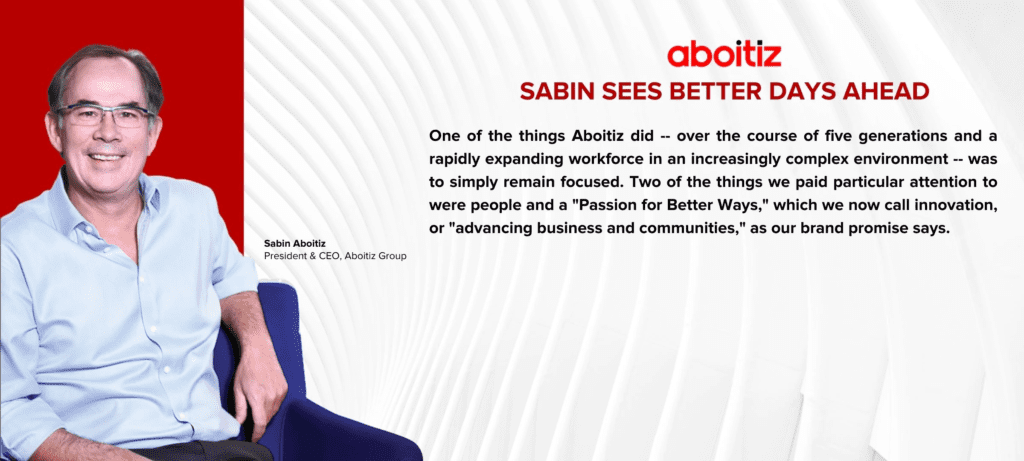
Employee Testimonials and Success Stories
- Real Stories, Real Impact: Feature authentic testimonials and success stories from employees who have experienced professional growth and fulfillment within the company.
- Example: Accenture Philippines showcases employee stories on its website, highlighting individual journeys and career progression. This personal touch adds credibility to the employer brand.
- Showcasing Career Progression: Illustrate opportunities for career advancement within the organization, demonstrating that employees can grow and develop their skills over time.
- Example: BPI (Bank of the Philippine Islands) emphasizes career development through mentorship programs and continuous learning opportunities, contributing to a positive employer brand.

Competitive Compensation and Benefits
- Transparent Compensation Structures: Be transparent about compensation structures, ensuring that potential candidates and employees understand the value they bring to the organization.
- Example: San Miguel Corporation is known for its competitive compensation packages and benefits, contributing to its reputation as an employer that values and rewards its workforce.
- Comprehensive Benefits Packages: Offer a comprehensive benefits package that goes beyond salary, including health insurance, retirement plans, and other perks that contribute to employees’ overall well-being.
- Example: Nestlé Philippines provides a range of benefits, including health and wellness programs, educational assistance, and a collaborative work environment, reinforcing its commitment to employee satisfaction.
Opportunities for Career Growth and Development
- Training and Development Programs: Highlight initiatives that focus on continuous learning, skill development, and training programs to support employees in their career journeys.
- Clear Career Paths: Clearly communicate the potential career paths available within the organization, demonstrating that employees have a roadmap for advancement.
- Example: BDO Unibank outlines career paths and progression opportunities, empowering employees with a clear understanding of how they can grow within the company.
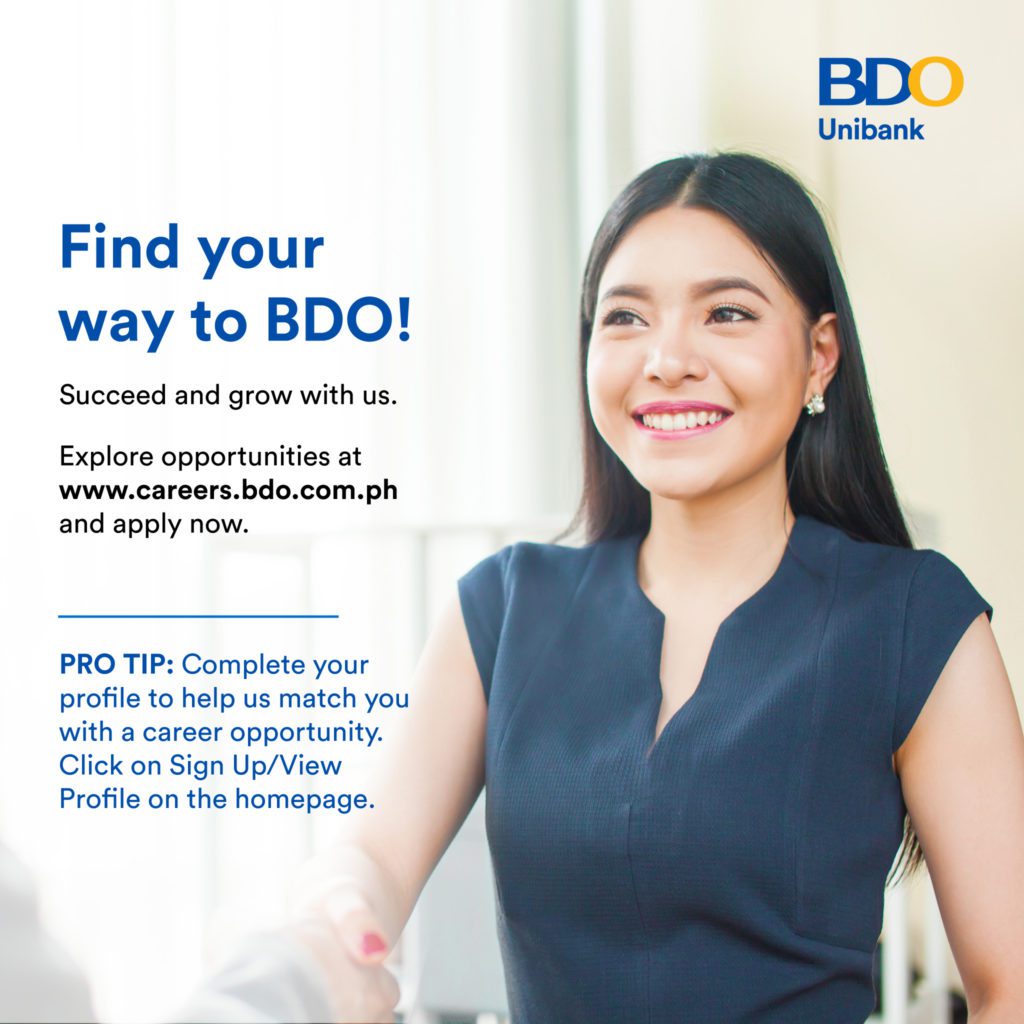
Work-Life Balance and Flexible Work Arrangements
- Flexible Work Policies: Showcase policies that support work-life balance, such as flexible work hours, remote work options, and family-friendly initiatives.
- Example: Globe Telecom promotes work-life balance through flexible work arrangements and initiatives that support employees in managing their professional and personal lives.
- Employee Well-being Programs: Implement programs that prioritize physical and mental well-being, fostering a healthy and supportive work environment.
- Example: Ayala Land integrates well-being programs, fitness activities, and mental health support into its corporate culture, contributing to employee satisfaction and a positive employer brand.

Successful employer branding in the Philippines revolves around nurturing a positive company culture, showcasing real employee experiences, offering competitive compensation and benefits, providing opportunities for growth, and promoting work-life balance.
By incorporating these key elements, organizations can create a compelling employer brand that resonates with the diverse and dynamic workforce of the Philippines.
4. Crafting Your Employer Branding Strategy in the Philippines
In the dynamic professional landscape of the Philippines, where the demand for skilled talent is high, crafting a compelling employer branding strategy is essential for attracting and retaining top-tier professionals.
Tailoring your approach to resonate with the local workforce involves a strategic blend of cultural understanding, targeted messaging, and leveraging digital platforms.
Researching Your Target Audience in the Philippines
- Demographic Understanding: Conduct thorough research to understand the demographic composition of the Philippine workforce. Consider factors such as age, educational background, and regional variations to tailor your messaging effectively.
- Cultural Sensitivity: Recognize and respect the cultural nuances of the Philippines. Incorporate elements that resonate with the local culture to build an authentic and relatable employer brand.
- Example: Procter & Gamble Philippines infuses its employer brand with Filipino cultural elements, creating a sense of belonging for its employees and potential candidates.
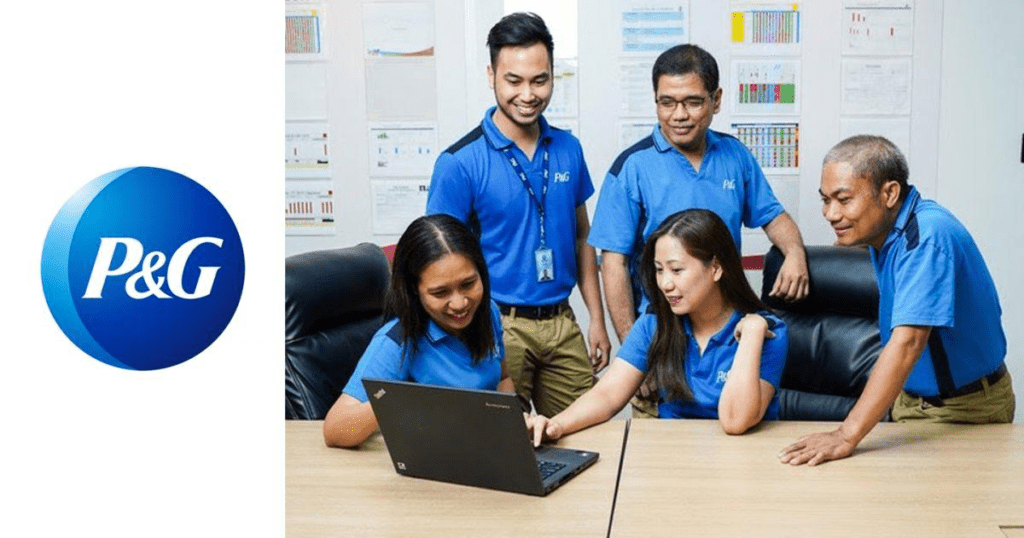
Tailoring Your Messaging for Local Relevance
- Language and Communication Style: Craft your messaging in a language and communication style that aligns with the local culture. This includes using colloquial expressions and references that resonate with the Filipino audience.
- Example: Coca-Cola Philippines adapts its communication style to be warm and relatable, reflecting the friendly and inclusive culture of the company.
- Highlighting Filipino Values: Showcase how your company embodies and values traits such as bayanihan (community spirit), malasakit (empathy), and pagkakaisa (unity) that are integral to Filipino culture.
- Example: SM Investments Corporation emphasizes its commitment to corporate social responsibility and community development, aligning with Filipino values and contributing to a positive employer brand.
Leveraging Digital Platforms for Maximum Reach
- Social Media Presence: Establish a strong presence on popular social media platforms in the Philippines, such as Facebook, LinkedIn, and Twitter. Share engaging content, employee testimonials, and behind-the-scenes glimpses to humanize your brand.
- Example: Teleperformance Philippines effectively utilizes social media to showcase its vibrant company culture, employee achievements, and community engagement initiatives, strengthening its employer brand.
- Online Employee Advocacy Programs: Encourage employees to become advocates for the company on social media. Implement programs that empower and incentivize employees to share their positive experiences and contribute to the company’s online presence.
- Example: ABS-CBN Corporation encourages its employees to share their experiences on social media, creating a digital community that amplifies the company’s employer brand.

Showcasing Employee Success Stories in the Philippine Context
- Localizing Success Narratives: Highlight success stories of employees who have thrived within the company, emphasizing their journey in the Philippine context. This adds authenticity and relatability to your employer brand.
- Incorporating Filipino Values in Narratives: Integrate Filipino values and work ethic in success narratives to connect with the local audience. Emphasize traits such as hard work, dedication, and resilience.
Engaging with Local Communities and Educational Institutions
- Partnerships with Educational Institutions: Foster partnerships with local universities and educational institutions to establish a pipeline for fresh talent. Engage in internship programs and campus initiatives to create awareness among students.
- Example: Microsoft Philippines collaborates with educational institutions to provide technology-focused programs and workshops, creating a pathway for students to enter the technology industry.
- Community Engagement Initiatives: Demonstrate corporate social responsibility through community engagement programs. Showcase how your company contributes to local communities, aligning with the Filipino value of bayanihan.
- Example: Ayala Corporation is actively involved in community development projects, reflecting its commitment to social responsibility and contributing to a positive employer brand.
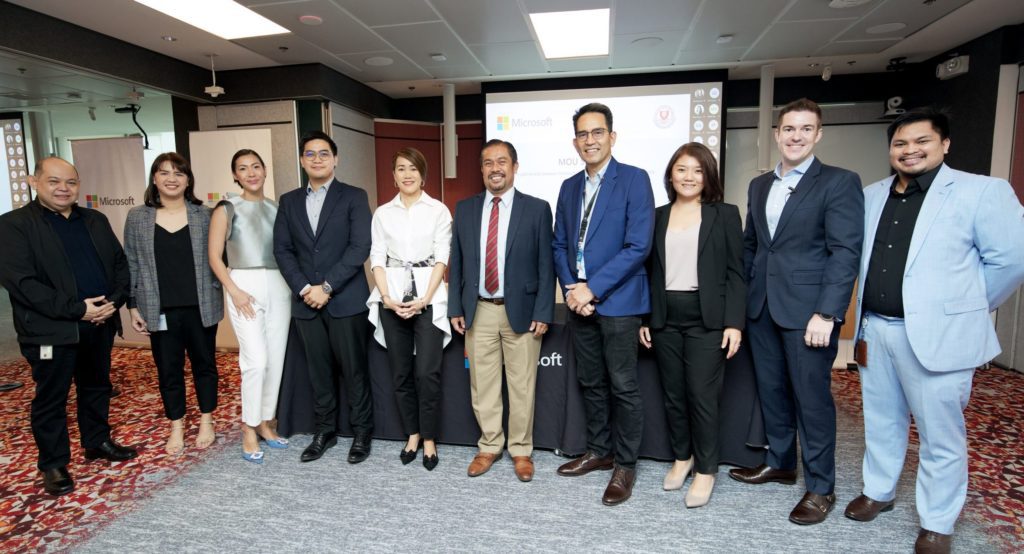
Measuring and Adjusting Your Employer Branding Efforts
- Key Performance Indicators (KPIs): Define KPIs to measure the success of your employer branding strategy. Metrics such as employee satisfaction scores, application rates, and social media engagement can provide valuable insights.
- Regular Audits and Adjustments: Conduct regular audits of your employer branding strategy to identify areas for improvement. Adjust your approach based on feedback, market trends, and the evolving needs of the workforce.
Crafting a successful employer branding strategy in the Philippines involves a comprehensive approach that combines cultural understanding, tailored messaging, digital engagement, and a commitment to community and employee well-being.
By aligning with the values and aspirations of the Filipino workforce, companies can create a compelling and authentic employer brand that resonates in the competitive job market.
5. Employer Branding Best Practices in the Philippines
Navigating the intricacies of the Philippine job market requires a strategic approach to employer branding.
These best practices are tailored to the unique characteristics of the local workforce, helping organizations build a positive and compelling employer brand that resonates in the competitive landscape.
Authenticity and Cultural Alignment
- Showcasing Filipino Values: Integrate Filipino values such as bayanihan (community spirit), malasakit (empathy), and pagkakaisa (unity) into your employer brand. Emphasize how these values align with the company culture.
- Example: Jollibee Foods Corporation incorporates Filipino values into its employer brand, fostering a sense of pride and connection among employees who identify with the cultural roots of the company.
- Localizing Content: Tailor your messaging to resonate with the local audience. Use language, visuals, and references that are culturally relevant to create an authentic connection with potential candidates.
- Example: Meralco (Manila Electric Company) effectively localizes its employer brand content, ensuring that it reflects the cultural diversity of the Philippines and speaks directly to the local workforce.
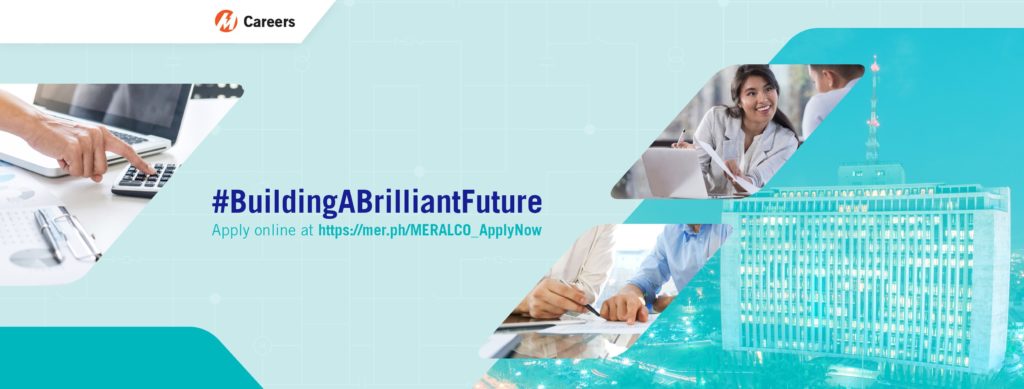
Employee-Centric Approach
- Employee Advocacy Programs: Empower employees to become advocates for the company. Implement programs that encourage employees to share their positive experiences on social media, contributing to the organic growth of your employer brand.
- Inclusivity and Diversity Initiatives: Showcase initiatives that promote inclusivity and diversity within the workplace. Highlight employee resource groups, mentorship programs, and diversity events.
Strategic Use of Digital Platforms
- Leveraging Social Media: Establish a strong presence on popular social media platforms. Share engaging content, employee stories, and behind-the-scenes glimpses to humanize the brand and connect with the audience.
- Interactive Content: Create interactive content that encourages audience participation. Polls, quizzes, and Q&A sessions can boost engagement and allow potential candidates to interact with your employer brand.
Employee Well-being and Benefits
- Comprehensive Benefits Packages: Clearly communicate the comprehensive benefits packages your company offers. This includes health insurance, retirement plans, and additional perks that contribute to employee satisfaction.
- Flexibility in Work Arrangements: Highlight flexible work arrangements and policies that support work-life balance. Emphasize the importance of employee well-being in your employer branding messaging.
Continuous Feedback and Improvement
- Employee Surveys and Feedback Sessions: Regularly conduct employee surveys and feedback sessions to gather insights into the employee experience. Use this feedback to make continuous improvements in your employer branding initiatives.
- Regular Audits of Employer Branding Strategy: Conduct regular audits of your employer branding strategy to identify areas for improvement. Stay attuned to market trends and adjust your approach based on evolving workforce expectations.
Implementing these best practices in employer branding can significantly enhance a company’s ability to attract, engage, and retain top talent in the Philippines.
By combining authenticity, employee-centric approaches, strategic use of digital platforms, a focus on well-being, and a commitment to continuous improvement, organizations can create a compelling employer brand that stands out in the competitive job market.
6. Measuring and Evaluating Employer Branding Success in the Philippines
Evaluating the success of your employer branding efforts in the dynamic job market of the Philippines is crucial for refining strategies, attracting top talent, and maintaining a positive company image.
Employers can leverage various key performance indicators (KPIs) and assessment methods to gauge the impact of their employer branding initiatives.
Key Performance Indicators (KPIs)
- Employee Satisfaction Scores (ESS): Implement regular surveys to gauge employee satisfaction. Track ESS as a key indicator of how well your organization is meeting the expectations and needs of its workforce.
- Application Rates and Quality of Applicants: Monitor the number of applications received and assess the quality of applicants. An increase in quality applications indicates that your employer brand is resonating with the right candidates.
- Employee Retention Rates: Track employee retention rates over time. A decline in turnover suggests that employees are satisfied and engaged, reflecting positively on your employer brand.
Employee Engagement Metrics
- Social Media Engagement: Assess the engagement levels on your social media platforms. High engagement, including likes, comments, and shares, indicates that your employer brand content is resonating with the audience.
- Employee Advocacy Program Participation: Evaluate the participation rates in employee advocacy programs. The higher the involvement, the more employees are actively promoting and endorsing your employer brand.
Candidate Experience Metrics
- Net Promoter Score (NPS): Utilize NPS to measure the likelihood of candidates recommending your organization as an employer. A positive NPS indicates a strong employer brand and a positive candidate experience.
- Time-to-Fill Positions: Assess the time it takes to fill open positions. A shorter time-to-fill indicates that your employer brand attracts candidates efficiently and expedites the hiring process.
Brand Perception Surveys
- External Surveys and Recognition: Participate in external surveys and industry recognitions to gauge how your employer brand is perceived in the broader market. Awards and positive rankings enhance your brand’s credibility.
- Online Reviews and Ratings: Monitor online employer review platforms for feedback from current and former employees. Positive reviews contribute to a favorable employer brand, while addressing concerns can enhance reputation.
Continuous Improvement Strategies
- Regular Audits and Feedback Sessions: Conduct regular audits of your employer branding strategy. Gather feedback from employees, candidates, and key stakeholders to identify areas for improvement and refine your approach.
- Benchmarking Against Industry Standards: Compare your employer brand metrics against industry benchmarks. This allows you to assess how your organization performs relative to competitors and identify areas where you can excel.
Impact on Recruitment Costs
- Cost per Hire Reduction: Evaluate the impact of your employer brand on recruitment costs. A reduction in cost per hire indicates that your employer brand is efficient in attracting candidates, minimizing expenses.
- Return on Investment (ROI) Analysis: Conduct an ROI analysis to assess the financial impact of your employer branding efforts. Calculate the returns relative to the investment made in employer brand initiatives.
Measuring and evaluating employer branding success in the Philippines involves a comprehensive assessment of key performance indicators, employee engagement metrics, candidate experience, brand perception, continuous improvement strategies, and the impact on recruitment costs.
By implementing these measurement practices, organizations can refine their employer branding strategies, enhance their appeal to top talent, and maintain a positive and competitive presence in the Philippine job market.
7. Challenges and Solutions of Employer Branding in the Philippines
Navigating the dynamic and competitive job market of the Philippines comes with its own set of challenges for employer branding.
From cultural nuances to emerging trends, addressing these challenges is vital for organizations seeking to build a strong employer brand in the Philippines.
Cultural Nuances and Localization Challenges
- Diverse Cultural Landscape: The Philippines is characterized by a rich tapestry of cultures and traditions. Tailoring your employer brand to resonate with this diversity poses a challenge, as one-size-fits-all approaches may not effectively capture the nuances.
- Solution: Personalization Strategies
- Implement personalized employer branding strategies that consider regional and cultural differences. Showcase how your company values and integrates diverse perspectives within its workforce.
- Solution: Personalization Strategies
- Language Sensitivity: Language plays a crucial role in effective communication. The challenge lies in ensuring that your employer brand messaging is not only translated accurately but also carries the intended cultural nuances.
- Solution: Native-Language Communication
- Engage local language experts to ensure accurate translations that convey the intended cultural nuances. Leverage colloquial expressions and idioms to connect with the local audience.
- Solution: Native-Language Communication
Intense Talent Competition and Attraction Challenges
- High Demand for Skilled Talent: The Philippines boasts a competitive job market with a high demand for skilled professionals, especially in sectors like IT and Business Process Outsourcing (BPO). Attracting and retaining top-tier talent becomes a significant challenge.
- Solution: Differentiation Strategies
- Differentiate your employer brand by highlighting unique selling points. Showcase specific programs, benefits, or a distinct company culture that sets your organization apart in the eyes of potential candidates.
- Solution: Differentiation Strategies
- Global Talent Attraction and Retention: With globalization, companies in the Philippines not only compete locally but also with international organizations. Attracting and retaining global talent poses a challenge for employer branding.
- Solution: Global Appeal with Local Touch
- Emphasize your company’s global outlook while ensuring that your employer brand retains a local touch. Showcase global opportunities, cultural diversity, and international collaboration to attract a broad talent pool.
- Solution: Global Appeal with Local Touch
Social Media Scrutiny and Reputation Management
- Online Employer Reviews and Reputation Challenges: The rise of online employer review platforms means that your employer brand is subject to scrutiny. Negative reviews can impact your reputation and hinder talent attraction efforts.
- Solution: Proactive Reputation Management
- Establish a proactive reputation management strategy. Address negative reviews transparently, showcase positive aspects of your employer brand, and actively engage with employees on these platforms to build a positive online presence.
- Solution: Proactive Reputation Management
- Social Media Amplification and Control: While social media is a powerful tool, maintaining control over your employer brand narrative on these platforms can be challenging. Unmonitored content can either enhance or damage your brand.
- Solution: Employee Advocacy Programs
- Implement employee advocacy programs to amplify a positive employer brand on social media. Encourage employees to share their experiences, achievements, and positive stories, turning them into brand ambassadors.
- Solution: Employee Advocacy Programs
Retention Challenges in a Competitive Landscape
- Employee Turnover Rates: The competitive job market in the Philippines contributes to higher turnover rates. Retaining talent, once recruited, becomes a challenge for employers seeking to build a stable and dedicated workforce.
- Solution: Focus on Employee Well-being
- Prioritize employee well-being through comprehensive benefits, career development opportunities, and initiatives that enhance work-life balance. A satisfied and engaged workforce is more likely to stay with the company.
- Solution: Focus on Employee Well-being
- Professional Growth Expectations: Skilled professionals in the Philippines often seek opportunities for continuous learning and career advancement. Failure to meet these expectations can result in talent attrition.
- Solution: Career Development Programs
- Implement robust career development programs that provide avenues for skill enhancement and advancement within the organization. Clearly communicate the growth paths available to employees, showcasing long-term opportunities.
- Solution: Career Development Programs
Impact of Economic Fluctuations
- Economic Uncertainty and Budget Constraints: Economic fluctuations can impact budget allocations for employer branding initiatives. Uncertainty may lead to a reduction in resources dedicated to building and maintaining a strong employer brand.
- Solution: Agile Budgeting and Flexibility
- Adopt an agile approach to budgeting, allowing flexibility to adjust employer branding strategies based on economic conditions. Prioritize high-impact initiatives even with limited resources.
- Solution: Agile Budgeting and Flexibility
- Salary and Compensation Pressures: Economic challenges can result in increased salary and compensation pressures. Balancing competitive compensation with budget constraints is a delicate task for employers.
- Solution: Total Rewards Approach
- Implement a total rewards approach that encompasses not just salary but also comprehensive benefits, recognition programs, and a positive work culture. Communicate the overall value proposition to employees.
- Solution: Total Rewards Approach
Technology Integration and Digitalization Challenges
- Adapting to Digital Platforms: The rapid digitalization of the workforce requires employers to adapt and integrate technology seamlessly into their employer branding strategies. This poses a challenge, especially for traditional organizations.
- Solution: Digital Transformation Initiatives
- Invest in digital transformation initiatives that enhance the digital employee experience. Leverage digital platforms for recruitment, onboarding, and communication, showcasing a commitment to innovation.
- Solution: Digital Transformation Initiatives
- Data Privacy and Security Concerns: The increasing reliance on digital platforms raises concerns about data privacy and security. Protecting employee information while utilizing technology for employer branding is a critical challenge.
- Solution: Robust Data Protection Measures
- Implement robust data protection measures and communicate them transparently to employees. Emphasize your commitment to safeguarding employee data, building trust in your employer brand.
- Solution: Robust Data Protection Measures
Alignment with Evolving Workforce Expectations
- Changing Workforce Expectations: The expectations of the modern workforce evolve rapidly. From flexible work arrangements to a focus on purpose-driven work, employers must align their employer brand with these changing expectations.
- Solution: Agility in Policies and Communication
- Maintain agility in policies and communication to adapt to evolving workforce expectations. Regularly review and update policies to align with emerging trends, showcasing a company culture that is attuned to employee needs.
- Solution: Agility in Policies and Communication
- Emphasis on Corporate Social Responsibility (CSR): The current workforce places a high value on corporate social responsibility. Employers must actively engage in CSR initiatives to align with the values of socially conscious professionals.
- Solution: Integrated CSR Initiatives
- Integrate CSR initiatives into your employer branding strategy. Showcase how your company contributes to social causes, environmental sustainability, and community development, aligning with the values of the socially conscious workforce.
- Solution: Integrated CSR Initiatives
Addressing the challenges of employer branding in the Philippines requires a multifaceted approach.
By implementing tailored solutions that consider cultural nuances, talent competition, online reputation, retention strategies, economic fluctuations, technology integration, and alignment with evolving workforce expectations, organizations can build a resilient and positive employer brand in the competitive job market.
8. Future Trends in Employer Branding for the Philippines
As the landscape of work continues to evolve, staying ahead of emerging trends in employer branding is crucial for organizations seeking to attract and retain top talent in the Philippines.
Anticipating and adapting to future trends ensures that employer branding strategies remain relevant and effective in the dynamic job market.
Emphasis on Employee Well-being and Mental Health
- Holistic Well-being Programs: Future employer branding will prioritize holistic well-being programs that go beyond traditional benefits. Companies will focus on initiatives that support mental health, physical wellness, and work-life balance.
- Example: Unilever Philippines has already integrated mental health support into its well-being programs, reflecting a commitment to the holistic health of its workforce.
- Flexible Work Arrangements: The future will see a continued emphasis on flexible work arrangements, including remote work options and flexible schedules. Employers will position these offerings as integral to employee well-being.
- Example: BPI (Bank of the Philippine Islands) has embraced flexible work arrangements, allowing employees to balance work and personal life effectively.
Personalization of Employee Experiences
- Tailored Employee Journeys: Future employer branding will involve the personalization of employee experiences. Companies will focus on understanding individual needs and aspirations, tailoring career paths, and providing personalized development plans.
- Example: Ayala Corporation uses personalized career development plans to align employee aspirations with organizational goals, contributing to a positive and customized employee experience.
- Technology-driven Personalization: Employers will leverage technology to personalize employee experiences, using data analytics to understand preferences, career goals, and learning styles.
Embrace of Diversity, Equity, and Inclusion (DEI)
- Strategic DEI Initiatives: Future employer branding will place a strong emphasis on diversity, equity, and inclusion. Companies will implement strategic initiatives to foster a diverse and inclusive workplace culture.
- Example: Accenture Philippines has been a pioneer in DEI initiatives, implementing programs that support gender equality, LGBTQ+ inclusion, and cultural diversity.
- Transparent Communication: Transparency in communicating DEI efforts will be a key trend. Employers will openly share their goals, progress, and success stories related to diversity and inclusion.
Digital Employee Experience and Employer Branding
- Enhanced Digital Onboarding: The future will witness the integration of advanced digital onboarding experiences. Employers will leverage technology to streamline the onboarding process, making it seamless and engaging.
- Virtual Collaboration Tools: As remote and hybrid work become more prevalent, future employer branding will highlight the use of advanced virtual collaboration tools. Companies will showcase how they facilitate seamless communication and collaboration in virtual environments.
Focus on Purpose-driven Work
- Corporate Purpose Alignment: Future employer branding will center around aligning corporate purpose with employee values. Companies will communicate their commitment to social responsibility, sustainability, and making a positive impact on society.
- Employee Involvement in Social Initiatives: Employers will actively involve employees in social initiatives, allowing them to contribute to causes that align with the company’s purpose.
Technology-driven Recruitment and Talent Acquisition
- AI-powered Recruitment: The future of employer branding will witness the increased use of Artificial Intelligence (AI) in recruitment processes. AI will streamline candidate sourcing, enhance screening processes, and provide data-driven insights.
- Virtual Hiring Events and Gamification: Employers will leverage virtual hiring events and gamification in recruitment strategies. These approaches create engaging experiences for candidates and showcase the company’s commitment to innovation.
Continuous Learning and Upskilling Opportunities
- Agile Learning Platforms: Future employer branding will highlight agile learning platforms that provide employees with continuous learning opportunities. Companies will showcase how they support upskilling and career development.
- Focus on Lifelong Learning: Employers will communicate a commitment to lifelong learning, emphasizing that the company is a place where employees can continually grow and adapt to evolving industry trends.
The future of employer branding in the Philippines is marked by a shift towards prioritizing employee well-being, personalization of experiences, diversity and inclusion, digitalization, purpose-driven work, technology-driven recruitment, and continuous learning.
Organizations that proactively embrace these trends will be better positioned to attract, engage, and retain top talent in the evolving world of work.
Conclusion
In the ever-evolving landscape of the Philippine job market, the importance of a robust employer branding strategy cannot be overstated.
This comprehensive guide has delved into the intricacies of employer branding in the Philippines, providing valuable insights, actionable strategies, and a roadmap for organizations seeking to position themselves as employers of choice.
Reflection on the Philippine Workforce Dynamics
As we navigate the diverse cultural landscape of the Philippines, we recognize the significance of understanding and embracing the nuances that shape the workforce.
From the spirit of bayanihan to the emphasis on malasakit and pagkakaisa, the cultural fabric of the Philippines is intricately woven into the professional tapestry.
Employers are not merely seeking employees; they are forging relationships with individuals who bring unique perspectives and values to the workplace.
Strategic Imperatives for Employer Branding Success
The guide has emphasized the strategic imperatives that underpin successful employer branding initiatives.
From personalization strategies that tailor employee experiences to technology-driven approaches that enhance the digital employee journey, organizations are encouraged to be proactive architects of their employer brand.
The future trends outlined, encompassing employee well-being, diversity and inclusion, and purpose-driven work, serve as beacons guiding employers toward a future-ready workforce.
Realizing the Power of Digital Platforms
In an era where the virtual realm is as significant as the physical, the guide has underscored the pivotal role of digital platforms.
From leveraging social media for employer advocacy to embracing AI in recruitment processes, organizations are urged to harness the power of technology to amplify their employer brand, connecting with candidates and employees in meaningful ways.
The Ongoing Evolution of Work
As the guide concludes, it’s evident that employer branding is not a static endeavor; rather, it’s a dynamic process that must continually adapt to the evolving expectations of the workforce.
The emphasis on continuous learning and upskilling, coupled with an agile response to economic fluctuations, positions organizations to not only survive but thrive in the face of change.
A Call to Action: Crafting a Distinctive Employer Brand
In this comprehensive guide, we’ve explored the nuances, challenges, and future trends shaping employer branding in the Philippines.
Now, the mantle is passed to organizations, inviting them to embark on a journey of crafting a distinctive and compelling employer brand.
Whether it’s aligning with the cultural values of the Philippines, embracing diversity and inclusion, or adopting innovative recruitment strategies, the guide provides a blueprint for success.
Elevating the Filipino Work Experience
Ultimately, the goal of employer branding is not only to attract talent but to elevate the Filipino work experience.
By fostering a workplace culture that values well-being, embraces diversity, and champions continuous growth, organizations contribute not only to their own success but to the broader development of a skilled and engaged workforce in the Philippines.
In the tapestry of employer branding, each organization holds a unique thread, contributing to the vibrant and evolving narrative of the Philippine professional landscape.
As we conclude this comprehensive guide, we look forward to witnessing organizations weave their stories of success, innovation, and commitment to creating workplaces where individuals thrive and contribute to a prosperous future.
If your company needs HR, hiring, or corporate services, you can use 9cv9 hiring and recruitment services. Book a consultation slot here, or send over an email to [email protected].
If you find this article useful, why not share it with your hiring manager and C-level suite friends and also leave a nice comment below?
We, at the 9cv9 Research Team, strive to bring the latest and most meaningful data, guides, and statistics to your doorstep.
To get access to top-quality guides, click over to 9cv9 Blog.
People Also Ask
What is an example of employee branding?
An example of employee branding is when a company encourages its employees to share their positive work experiences on social media. This organic advocacy helps shape a positive perception of the company as an employer and attracts potential candidates influenced by authentic employee testimonials.
What does employer branding include?
Employer branding includes crafting a positive employer image through strategic communication. It encompasses company culture, values, benefits, work environment, and reputation. A compelling employer brand attracts, engages, and retains top talent, fostering a desirable workplace identity.
Which company has the best employer branding?
Determining the “best” employer branding is subjective, but companies like Google, Apple, and Microsoft are often recognized. Google, for instance, is praised for its innovative work environment, inclusive culture, and attractive benefits, contributing to a strong and positive employer brand.



























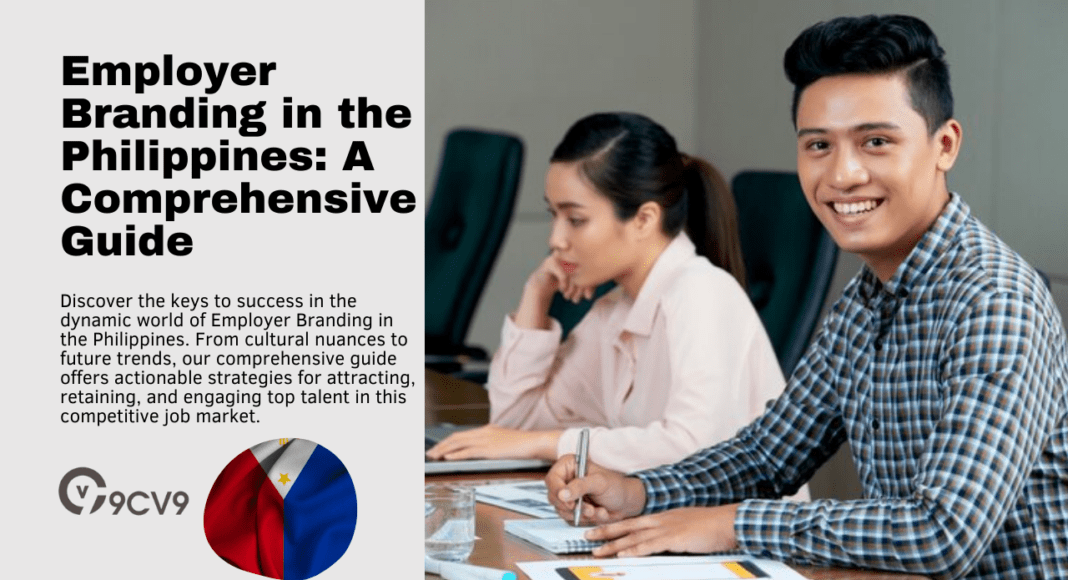


![Writing A Good CV [6 Tips To Improve Your CV] 6 Tips To Improve Your CV](https://blog.9cv9.com/wp-content/uploads/2020/06/2020-06-02-2-100x70.png)


